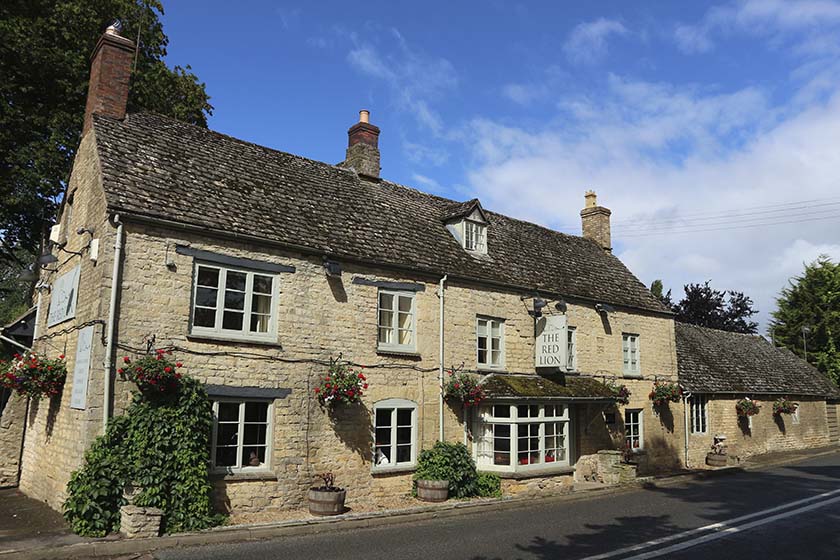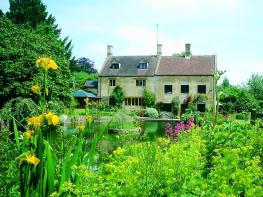The Fire Service College is a leading residential training venue situated in the North Cotswolds…
Todenham and the lost Ditchfords

A walk among the ghosts of former medieval agricultural communities, abandoned since the 15th century.
4.75 miles (7.7kms)
About the walk
There are cases of so-called ‘lost villages’ all over England, and almost as many theories and explanations for their demise. The principal culprit is said to be the Black Death sweeping through the countryside in the 14th century. However, in the case of the Ditchfords, there appear to be other reasons for their disappearance. Ditchford is a name that was widespread in this area (perhaps because of their proximity to the Fosse Way – fosse meaning ‘ditch’ in Old English). Remnants of this, in the form of the house and farm names, are still evident on detailed maps, but of the three villages – Ditchford Frary, Lower Ditchford and Upper Ditchford – there is almost no trace.
A priest from Warwickshire called John Rouse wrote in 1491 that the Ditchfords had been abandoned during his lifetime. Changes in agricultural practices are thought to be the principal reason for this abandonment. As farming gradually became more efficient there was a disinclination to cultivate the stony soils of the more exposed and windswept upland areas.
At the same time, in the Cotswolds, the wool trade was rapidly supplanting arable farming as the wolds were given over to sheep. Much of the land was owned by the great abbeys who, deriving a third of their income from wool, turned vast tracts of land over to summer pasture in the uplands and winter pastures on the more sheltered lower slopes. The result was that the villagers, mostly farm labourers who depended on access to arable land for their livelihood, lost access. They simply had to move elsewhere in search of work.
Today there are no solid remains of any of the three villages. What you can see, however, is a series of regular rolls and shapes in the land that indicate settlement. Upper Ditchford, which stood on the slope near Neighbrook Farm, is the least obvious, but you can see banked enclosures and terraces that probably supported buildings. The site is somewhat clearer in the case of Lower Ditchford, where there are terraces and the site of a manor house and moat. Ditchford Frary has left its name to a nearby farmhouse.
Todenham survived the rigours of depopulation, and today is a quiet and unspoilt village situated on the edge of the Cotswolds. It’s really a long, single road flanked by an assortment of houses and their leafy gardens. The manor house dates from the end of the Georgian period, while St Thomas à Becket Church, with its tall steeple, towers over the village, and is worth a visit for its decorated and Gothic interior. Other notable features include its 13th-century font with the names of 18th-century churchwardens inscribed upon it.
Walk directions
From a lay-by below Todenham village hall, walk up to turn left onto a wide track just after the hall, signposted ‘public path’. Just before Ash House, go left through a kissing gate in the corner of the hedge, then diagonally right across the open field to the gate opposite.
Go through a kissing gate in the hedge on the far side, into a field of undulations indicating medieval ploughing. Go straight ahead to a stile, cross into the neighbouring field and, staying on its upper part, go straight ahead in the direction of a large house.
Cross another stile and join a grassy farm track. Where the track goes into a field on the right, bear left to pass to the right of a brick ruin, and cross a footbridge with gates at each end.
Cross this bridge and then go straight ahead, crossing a field (amid the earthworks of the site of Ditchford Frary) with a farmhouse ahead to the right. On the other side, go through a field gate, cross another field and pass through a field gate to join a farm track.
If you wish to see the site of Lower Ditchford, turn left here onto the metalled track and keep going across the former railway line until you approach a road – the remains are to your left. Then return along the track. Otherwise turn right on the track and pass behind the farmhouse. The track becomes a metalled lane.
After 0.5 miles (800m), turn right through a gate just before High Furze farm into a field. Follow its left margin until it dips down to a ford across Knee Brook. Turn right here, and after 70 paces find a bridge on your left.
Cross this ancient stone bridge and head uphill to the faint, grassy track that rises from the ford. Staying on this line, with the brook now to your right, you will come to a gate in the top corner. Go through onto a track that rises between tree lines and copses. After 0.5 miles (800m) you reach a junction opposite an entrance to Todenham Manor.
Turn first right here and then follow this track as it curves left, around the manor between post and rail fences and beech hedges, and finally brings you back to the village. Turn left for the church, or turn right to return to your car.
Additional information
Track and field, quiet lanes, ford or bridge, several stiles
Rolling fields, with good views at some points
On lead around livestock
OS Explorer OL45 The Cotswolds
Lay-bys on Todenham's main street, south of village hall
None on route
WALKING IN SAFETY
Read our tips to look after yourself and the environment when following this walk.
Find out more
Also in the area
About the area
Discover Gloucestershire
Gloucestershire is home to a variety of landscapes. The Cotswolds, a region of gentle hills, valleys and gem-like villages, roll through the county. To their west is the Severn Plain, watered by Britain’s longest river, and characterised by orchards and farms marked out by hedgerows that blaze with mayflower in the spring, and beyond the Severn are the Forest of Dean and the Wye Valley.
Throughout the county you are never far away from the past. Neolithic burial chambers are widespread, and so too are the remains of Roman villas, many of which retain the fine mosaic work produced by Cirencester workshops. There are several examples of Saxon building, while in the Stroud valleys abandoned mills and canals are the mark left by the Industrial Revolution. Gloucestershire has always been known for its abbeys, but most of them have disappeared or lie in ruins. However, few counties can equal the churches that remain here. These are many and diverse, from the ‘wool’ churches in Chipping Campden and Northleach, to the cathedral at Gloucester, the abbey church at Tewkesbury or remote St Mary’s, standing alone near Dymock.
Nearby stays
Restaurants and Pubs
Nearby experiences
Recommended things to do
Why choose Rated Trips?
Your trusted guide to rated places across the UK
The best coverage
Discover more than 15,000 professionally rated places to stay, eat and visit from across the UK and Ireland.
Quality assured
Choose a place to stay safe in the knowledge that it has been expertly assessed by trained assessors.
Plan your next trip
Search by location or the type of place you're visiting to find your next ideal holiday experience.
Travel inspiration
Read our articles, city guides and recommended things to do for inspiration. We're here to help you explore the UK.













